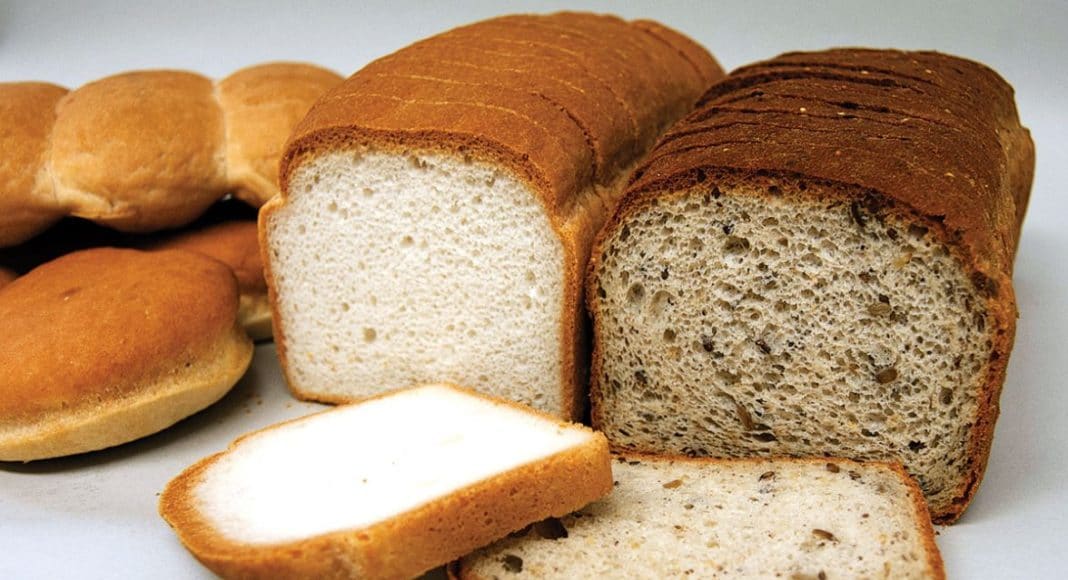[deck]A co-product of the french fry processing industry, potato starch is a valuable resource for a growing list of applications.[/deck]
Few products are as versatile as potato starch. To name just a few of its many applications, potato starch can be found in the kitchens of most Chinese restaurants around the world, where it’s used as a thickener. It is used in many snack foods, including dry-roasted peanuts, to hold the flavouring in place. Potato starch is utilized for filtration in yeast production, and it is widely used throughout the food processing industry as a general thickener, binder, texturizer, anti-caking and gelling agent. It is also found as an additive in many cosmetic and pharmaceutical products, and has numerous uses in the pet food industry.
Because potato starch is gluten-free, it is also used extensively by the rapidly expanding gluten-free market. “The gluten-free industry just keeps growing,” says Earl McLaren, president of Manitoba Starch Products based in Carberry, Man., the only potato starch processing facility in Canada. “It’s a market that we have found is increasingly serving both real and perceived needs for people who have a gluten intolerance and those who pursue a gluten-free diet because they feel it’s a healthier thing to do,” he says. MSP currently supplies potato starch to several of the largest gluten-free food manufacturers in Canada.

Another area where potato starch holds promise is as a feedstock to produce bioplastics. Much research around this application has been conducted in Canada at Agriculture and Agri-Food Canada’s Guelph Food Research Centre in Guelph, Ont.
To produce bioplastics, potato starch is converted into a plastic-like resin that can be injection moulded into products that are biodegradable and compostable. There are many applications for the resulting material, including food packaging that allows food to breathe and yet is durable enough to be heated in an oven or microwave. “We are working to further improve the processing ability, mechanical properties and water absorption qualities of potato starch for bioplastics production,” says Qiang Liu, a food scientist who is leading the research at AAFC. “The next step will be to have our technology picked up by companies for use in their products, because this is public research and we have made it available for the industry to use.”
Commercializing potato starch-based bioplastics technology may prove to be a challenge, as some companies have already discovered. Probably the biggest hurdle facing the potato bioplastics industry is the need for displacing corn starch from its position as a well-established, cheap source of feedstock for bioplastics production.
About eight and a half years ago, Excellent Packaging and Supply in Richmond, Calif. launched a line of compostable cutlery called SpudWare made from potato starch. A few years later, the Asian manufacturer of the product switched to corn starch, because a local supply was more readily available. “There are already systems in place where they process corn to get the starch, so the availability [of corn starch] is very robust all over the world,” says Allen King, president of Excellent Packaging. “It’s an easily available source of starch when you want to ferment PLA or some other bioplastic.”
King says he doesn’t know of many companies that are using potato starch exclusively in bioplastics production. Liu believes that’s because potato starch is currently more expensive than competitors like corn starch.
Promising Future
Manitoba Starch Products has also given bioplastics a try. A few years ago, the company worked with Rodenburg Biopolymers B.V. of the Netherlands to bring its patented potato starch-based bioplastics technology to Canada. The companies developed some experimental products under the brand name Solanyl, but found demand for the products was slow to build. As a consequence, MSP decided about three years ago to refocus its research efforts in different areas.
That’s not to say, however, that potato starch doesn’t hold promise for the future as a source of raw material in the bioplastics industry. The potential to develop localized production exists where there is a good supply of the raw material that offers growers an opportunity to invest in adding value to their crops.

Potato starch is derived from the cutting water of French fry production, something that would otherwise be a waste product. “To me it’s similar to the story of polystyrene, which years ago was considered a toxic byproduct of oil refining and they had to pay to ship it to a toxic waste dump,” says King. “Then some brilliant chemists at Dow Chemical realized they could expand it into polystyrene foam and use it for insulated food packaging, coffee cups and all these things. It really took off because they could make these products cheaply since the raw material was virtually free.”
Many in the industry feel that there will be increasing demand for potato-based products such as bioplastics and functional food ingredients, which is driving some preliminary research to develop new potato varieties with higher starch content or having different starch structure with different amylase content. “The question is always about the value to the growers,” says Liu. “It will depend on the market demand, but if there is a high demand for potato starch-based bioplastics products, I think potato varieties developed specifically for the bioplastics industry will come. There are some European countries where these have already been developed.”
In the future, potato growers may have more options to grow varieties to serve specific markets that add more value to the crop. Just as corn can be targeted to the ethanol, feed or food markets, potatoes may one day be grown specifically for niche markets within the food, feed, neutraceuticals or bioplastics industries.











